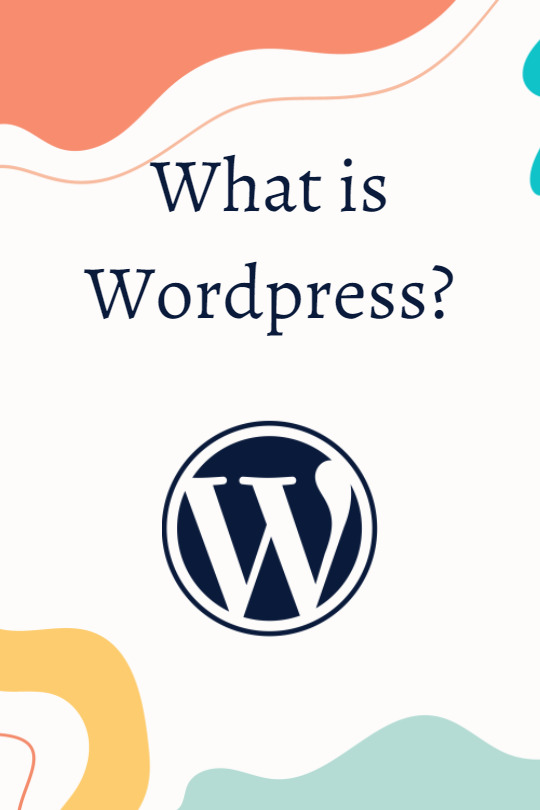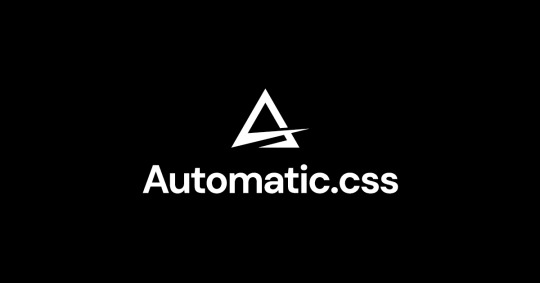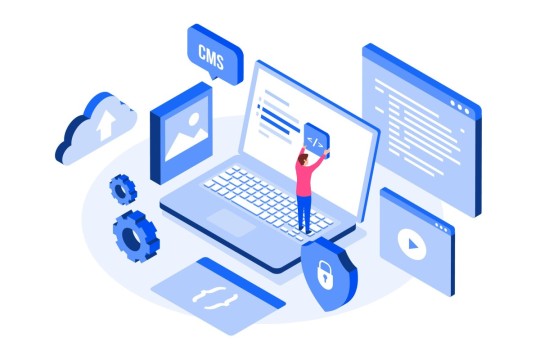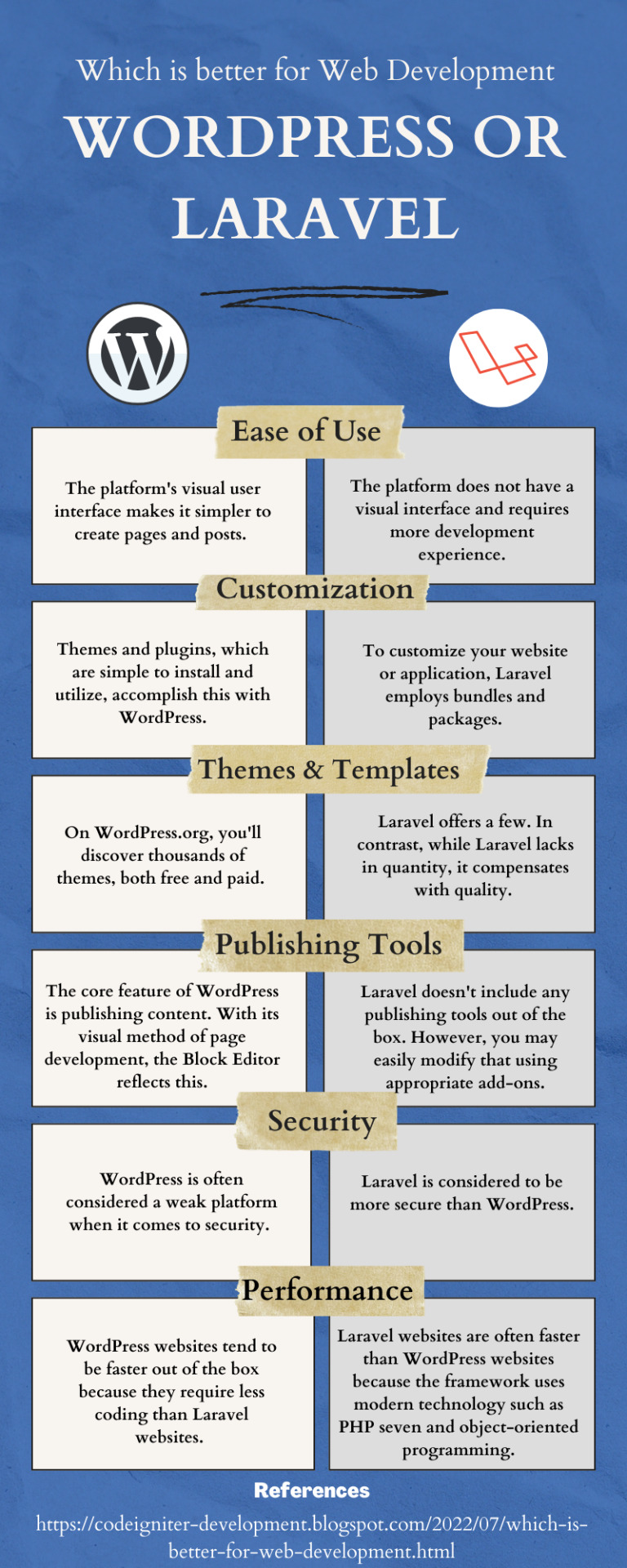#wordpress framework
Text

WordPress software is open-source, and WordPress software is free to download and use. This means that you can freely download, install, use, and change WordPress as per your needs. In many cases, people operate WordPress because it is a simple platform to work with if you are a beginner in web development. The best thing about WordPress is that WordPress is simple to use and flexible enough for creating a variety of types of websites.
WordPress is the content management system that I use for the majority of websites that I design, and it is also the platform I recommend to friends, but WordPress is not perfect. WordPress is just one of many website builders and content management systems users can download and install for free, but it has some unique features that make it the most popular content management system used today. We want to break down the benefits of using WordPress for you, giving you an unambiguous understanding of why WordPress is the world's most popular content management system and site-building software. As you can see, you can use WordPress for personal or business websites, and there is not much that you cannot do using this powerful content management system.
WordPress contains a plugin architecture and template system, so you can customize any site to suit your business, blog, portfolio, or online shop. There are no restrictions in the way that self-hosted versions of WordPress are used, so you can customize the site however you want, and maintain complete control of the content. Since the WordPress framework is open-source, you can modify or develop the source code however you want, customizing website features and the overall appearance. WordPress is completely customizable, and its plugin and theme systems can allow you to create nearly any kind of website that you want.
WordPress is popular because it meets many users' needs thanks to its flexible framework that allows designers and developers to build and edit layouts and applications. Due to the huge ecosystem of plugins in WordPress, you can use WordPress to do anything, from creating an e-commerce shop, starting up a local directory such as Yelp, building a social networking site, and much more. For instance, you can use WordPress to scale a business, create virtual classrooms, build forums, manage social media platforms, or run just about any other kind of project you can think of. WordPress makes the core tools to create a WordPress site accessible to every user, not just experienced web developers, and these tools can support both a small personal website and a big, complex business Web portal.
WordPress is used to not only create webpages more quickly but to effectively manage content. All that is required for the user is a domain name and web hosting account. WordPress can be installed for free via the host of the WordPress hosting service or downloaded directly from WordPress.org.
In this article, we will refer to WordPress.org, which is a widespread open-source software. We have put together a list of the most important reasons you should use WordPress.org (and how it can help your site grow).
#wordpress hosting#wordpress software#wordpress framework#wordpress site#content management#online shop#web developers#website features#change wordpress#social networking#social media#web portal#networking site#ecommerce shop#website builders
2 notes
·
View notes
Text
✨🌙 Read my comic Glimmer! 🌙✨\
Glimmer now has its own website! Read the latest update and the whole thing through.
It's created super cheaply with rarebit on neocities, so please bear with me. Updates aren't gonna happen like, exactly at 9am every Tuesday (as I have a day job, actullally) but they will be regular and weekly. Posts will be up first on Patreon (both free and paid).
I've been eschewing wordpress and CMS editors in deference to basic HTML websites lately, as simpler things just seem to make more sense to me nowadays with how AI and social media is just in.. the world... in general... I can't schedule posts in advance and have to update each JS file/image manually, lol. But, I have control over basically everything and don't have to worry about backend security, SSL certificates or spam bots commenting on everything. anyhway. Enjoy!
#furry art#mitsene#webcomic#website#toonscroll#webtoon#digital comic#indie comic#furry comic#anthro comic#comic website#html#boostrap this shit#but not actually bootstrap the responsive framework#fuck ai#fuck wordpress#i'm tired of the internet in general
2 notes
·
View notes
Text
[solved] Can Wordpress be replaced by a Framework like Django or Ruby on Rails?
[solved] Can Wordpress be replaced by a Framework like Django or Ruby on Rails?
WordPress is a popular and widely-used content management system (CMS) that is known for its ease of use and versatility. With its vast ecosystem of plugins and themes, it is often the go-to choice for individuals and businesses looking to create a website without the need for extensive coding knowledge.
On the other hand, frameworks like Django and Ruby on Rails are powerful tools for building…
View On WordPress
0 notes
Text
From Zero to Hero: Supercharging Your WordPress Theme with an Optimised Functions File
Welcome to the first installment of our epic mini-series aimed at turning you into a WordPress wizard! In this episode, we're diving into the mystical world of the functions.php file. Forget capes and wands, this file is the real MVP in your WordPress arsenal. Learn how to code your functions.php for optimal performance, boost your website's speed, and keep it cleaner than a cat on 'nip—all while understanding the 'what' and 'why' behind each magical line of code. Don't just build a theme; build an empire. Stay tuned, you digital Demi-god, this is where your journey begins! 🚀
The functions file in WordPress, fondly known as functions.php, is the bloody backbone of your WordPress theme. It's where you can add, remove, or tweak functionalities without mucking up the core WordPress files. Here's a stripped-down example for optimal performance:
phpCopy code
<?php // Add Theme Support function theme_setup(){ add_theme_support( 'post-thumbnails' ); // Enables Post Thumbnails add_theme_support( 'title-tag' ); // Adds <title> Tags add_theme_support( 'html5', array( 'search-form' ) ); // Enables HTML5 Support } add_action( 'after_setup_theme', 'theme_setup' ); // Enqueue Styles and Scripts function enqueue_styles_scripts(){ wp_enqueue_style( 'main-css', get_stylesheet_uri(), array(), '1.0', 'all' ); wp_enqueue_script( 'main-js', get_template_directory_uri() . '/js/main.js', array( 'jquery' ), '1.0', true ); } add_action( 'wp_enqueue_scripts', 'enqueue_styles_scripts' ); // Register Menus function register_my_menus() { register_nav_menus( array( 'main-menu' => __( 'Main Menu' ), 'footer-menu' => __( 'Footer Menu' ) ) ); } add_action( 'init', 'register_my_menus' ); // Remove WP Version Number function remove_version() { return ''; } add_filter('the_generator', 'remove_version'); // Remove Junk from Head remove_action('wp_head', 'rsd_link'); remove_action('wp_head', 'wlwmanifest_link'); ?>
So, what's happening here, you ask?
Theme Setup: We're kicking off by enabling post thumbnails, title tags, and HTML5 support for search forms. Why? So that your theme can handle these bloody essentials without breaking a sweat.
Enqueue Styles & Scripts: Here, we're adding our styles and scripts. "Enqueueing" ensures that WordPress loads these assets in an orderly and non-conflicting manner.
Register Menus: We're creating two menus, the Main Menu and the Footer Menu, to keep everything tidy and simple.
Remove WP Version Number: For a bit of extra security, we’re removing the version number of WordPress. You don't want some bugger figuring out you're running an old version and exploiting a vulnerability, do you?
Remove Junk from Head: The last bit of code is about cleaning up unnecessary links that WordPress adds to the site's <head>. Less is more!
Hope that helps, you digital marvel! Let me know if you're hungry for more knowledge
#wordpress#php#hosting#webdesign#technology#website#php programming#php script#phpdevelopment#software#development#developer#php framework
0 notes
Photo

New Post has been published on https://themesnulled.us/automatic-css-2-6-2-the-1-utility-framework-for-wordpress-page-builders/
Automatic.css 2.6.2 - The #1 Utility Framework for WordPress Page Builders
0 notes
Text
Exploring WordPress Plugin Frameworks and Libraries
When it comes to WordPress plugin development, using frameworks and libraries can significantly streamline the process and enhance the functionality of your plugins. In this blog post, we will delve into the world of WordPress plugin frameworks and libraries, exploring their benefits and showcasing some popular options that can boost your development workflow.
What are WordPress Plugin Frameworks? WordPress plugin frameworks provide a structured approach to plugin development. They offer a set of pre-defined functions, classes, and methods that developers can leverage to build robust and efficient plugins. These frameworks act as a foundation, simplifying common tasks and providing a consistent structure for plugin code.
Popular WordPress Plugin Frameworks and Libraries:
Redux Framework: Redux is a powerful framework, used for creating advanced settings panels for WordPress plugins. It simplifies the process of creating options pages, meta boxes, and custom fields, allowing developers to focus on the plugin's core functionality.
WP-CLI: WP-CLI is a command-line interface for WordPress, offering a suite of commands that developers can use to manage and interact with WordPress sites. It enables developers to automate tasks, perform database operations, and even create custom commands for their plugins.
CMB2: CMB2 is a versatile library that simplifies the creation of meta boxes and custom fields in WordPress. It offers an intuitive API for adding fields to post-edit screens, user profiles, and theme options.
Titan Framework: Titan Framework simplifies plugin development by providing a rich set of options for creating settings pages, custom post types, and more. It offers a user-friendly interface and supports a wide range of field types.
Benefits of Using Plugin Frameworks and Libraries:
Reusability of code: Frameworks and libraries provide pre-built components and functions, saving developers time and effort by avoiding repetitive coding.
Consistent coding standards: Frameworks enforce coding standards and best practices, resulting in cleaner and more maintainable code.
Built-in features and functionality: Many frameworks come with built-in features such as settings panels, meta boxes, and form validation, reducing the need for custom development.
Community support and updates: Popular frameworks have active communities that offer support, documentation, and regular updates, ensuring the longevity of your plugins.
Considerations for Choosing a Plugin Framework or Library:
When selecting a framework or library, consider the following factors:
Compatibility: Ensure that the framework is compatible with your version of WordPress and other plugins you intend to use.
Community support: A thriving community provides assistance, updates, and resources to help you overcome any obstacles.
Documentation and learning resources: Look for frameworks with comprehensive documentation and tutorials that facilitate the learning process.
Integration capabilities: Consider how well the framework integrates with other popular plugins and themes to avoid compatibility issues.
Tips for Effective Use of Plugin Frameworks and Libraries:
Familiarize yourself with the documentation and available resources to fully understand the capabilities and best practices of the framework.
Follow coding standards and guidelines specific to the framework to ensure consistency and compatibility.
Stay updated with new releases and updates to take advantage of new features and improvements.
Engage in community forums and discussions to gain insights, troubleshoot issues, and share your experiences with other developers.
WordPress plugin frameworks and libraries offer developers a wealth of tools and resources to simplify and enhance the plugin development process. By leveraging these frameworks, you can save time, maintain code consistency, and tap into powerful features and functionalities. So, explore the available frameworks, experiment with code examples, and choose the ones that align with your project requirements. Happy coding! To know more visit us at https://magnigeeks.com/
0 notes
Text
Top 6 WordPress Editors for Customizing Your Website
0 notes
Text
Top 5 Web Development Frameworks to Choose from
#php framework development#framework services#framework solutions#php framework for web development#wordpress development company#wordpress development services#wordpress web design services
0 notes
Text
Blog WordPress
www.fulgor-it.info/webd/

0 notes
Text
Complete Guide on How to Select the CMS to Showcase Your Brand
Complete Guide on How to Select the CMS to Showcase Your Brand
A website is a great way to showcase your products and services to the world. But before building one, you must first select a CMS development framework for your website.
Think of CMS as a super-tool that seamlessly allows you to modify, add, or remove any text, image, audio, or video on your website. The right CMS framework can keep your online presence organized and looking great…

View On WordPress
#cms development frameworks#custom wordpress development company#custom wordpress development services#wordpress agency#WordPress development agency#WordPress development company#WordPress development company near me#WordPress development firm#wordpress website development services
0 notes
Link
#>Home#>HTML#>Resets#>Frameworks#>Ajax#>WordPress#>Plugins#>Front#>CSS#>Grids#>JavaScript#>jQuery#>Themes#>Custom#pure
0 notes
Link
#>Home#>HTML#>Resets#>Frameworks#>Ajax#>WordPress#>Plugins#>Front#>CSS#>Grids#>JavaScript#>jQuery#>Themes#>Custom#pure
0 notes
Text
Embracing the Future of WordPress Development with Full Site Editing (FSE)
WordPress, the veritable titan of the content management system (CMS) world, never ceases to evolve and innovate. One of the most buzzworthy subjects circulating in the WordPress development community is Full Site Editing (FSE), a feature that promises to revolutionize how users and developers interact with the platform. The advent of FSE will certainly impact how themes are developed, used, and extended, both for developers and end-users.
What is Full Site Editing (FSE)?
Full Site Editing is a part of the WordPress project’s Phase 2 in the implementation of Gutenberg, the block editor introduced in WordPress 5.0. FSE extends the utility of the block editor beyond posts and pages, allowing users to manage and customize all elements of their website using a block-based interface. With it, you can control and design headers, footers, sidebars, and more, all without having to delve into theme code. The global styles and settings can be modified to control the entire site's design from one place.
The Impact on Theme Development
Traditional WordPress themes may experience a seismic shift with the proliferation of FSE. This feature is bound to streamline the theme development process, as the dependency on intricate PHP files and CSS will be diminished.
Simplified Development: Developers can focus on crafting block patterns and styles rather than juggling numerous template files.
User Empowerment: FSE empowers users with little to no coding knowledge to have more control over their website’s design and layout, thus widening the user demographic.
Modular Design: The modularity of block design makes it easier to manage, update, and swap out design elements without affecting the overall site functionality.
Unified Experience: The integration of a consistent block editor throughout the entire site management process affords users a harmonious and unified design experience.
Challenges Ahead
Despite its many perks, FSE comes with its own set of challenges that developers and users need to navigate.
Learning Curve: Traditional developers have to acquaint themselves with the nuances and intricacies of FSE and block theme development.
Compatibility: Ensuring that existing themes and plugins are compatible with FSE will be a substantial task.
Performance: Managing the performance and ensuring that the site doesn’t get bogged down with numerous blocks and dynamic elements will be crucial.
Customization Limitations: Although FSE is highly customizable, there might be limitations that could potentially restrict highly specific or complex design implementations.
Embracing FSE in Your WordPress Projects
Adopting FSE into your WordPress development projects may seem daunting initially, but the long-term advantages for both developers and end-users are palpable. Here are a few steps to help you get started:
Educate and Update: Keep yourself and your team updated with the latest developments in FSE through WordPress official channels, community forums, and tutorials.
Experiment: Create a staging or local environment to test FSE and experiment with block theme development.
Feedback: Engage with the WordPress community to share experiences, learn from peers, and perhaps even contribute to the ongoing development of FSE.
Prepare: Update your existing projects, plugins, and themes to ensure compatibility with FSE.
Conclusion
The rollout of Full Site Editing in WordPress marks a pivotal moment in web development, democratizing website design, and enabling a more extensive range of users to implement their visions online with ease and flexibility. While FSE introduces a novel methodology of developing and managing websites, it is also an invitation to innovate and explore new horizons in the digital landscape. By aligning with FSE, developers, designers, and businesses can stay ahead in the digital curve, ensuring that their platforms are robust, future-proof, and user-friendly.
Remember, the future is blocky, and it’s here to revolutionise the way we conceive, create, and interact with web content. So, let’s embrace it, explore it, and innovate within this dynamic new framework to carve out novel digital experiences for users across the globe.
#hosting#wordpress#webdesign#phpdevelopment#php#php script#php framework#userexperience#blogger#web development#pocket#email#future#futurism#technology#diy#design#creativedesign#digital media#world wide web#website#web developers#website design#software#webdevelopment
1 note
·
View note
Text
What are the Technologies which are preferable for ecommerce websites ?

We talk about the technologies that are best for e-commerce websites in this blog. The basic goal of any business expansion is to have a website. The choice of technology is the most important factor in website development. We must evaluate and conduct research to determine which platforms and technologies work best for e-commerce websites since they must offer a comprehensive solution for all problems and assist in database management.
Front-End Technologies:
The primary 3 appropriate technologies for development are provided by the front-end technologies package. Furthermore, you are not required to choose a particular option. Choose from any of them.
HTML (HyperText Markup Language)
CSS (Cascading Style Sheets)
Java Script (the JS libraries used for front end development are React, Vue, Angular, jQuery)
Back-End Technologies:
The back end, which is the technology's server-facing component, makes use of a plethora of frameworks and tools to carry out its operations. The greatest coding techniques for your website are provided by these technologies. Different languages are used in these technologies.

You will choose any of the technology for E-commerce website development listed below, as per your concern & concept.
Java
Java is an object-oriented class-based programming language that is primarily intended for implementations with the fewest implementation dependencies. The "write once, run anywhere" philosophy is used in Java development, enabling code written in Java to run on any platform that supports Java without the need for additional compilation.
PHP
The development of functional and aesthetically pleasing web apps uses PHP, a free and open-source technology. It is a scripting language that runs on the server and can render dynamic web pages and programmes.
Dot Net
Dot Net is a Microsoft software framework that primarily utilises the Windows operating system. It's a strong framework that enables you to create web apps for many sectors that range in complexity from simple to complex.
Ruby On Rails
Ruby on Rails (ROR) is a web application development framework that organises the creation of the apps using the MVC - model view controller - architecture.
Magento
Magento is a renowned eCommerce system that offers developers a unique, adaptable platform where they can easily manage the appearance, operation, and content of any online store.
Salesforce technology
One of the most popular and cutting-edge technologies, Salesforce automates daily operations and enhances customer service.
Shopify Development
Shopify is a SaaS-based platform that has allowed many business experts to quickly set up and manage an online store without worrying about technology.
WooCommerce Development
An open-source e-commerce plugin for WordPress web development is called WooCommerce. It is intended for medium-sized to large-sized WordPress-based online retailers.
Magento 2
The primary objective of Magento 2's release is to enhance user experience compared to Magento 1; Magento 2 delivers a wealth of cutting-edge capabilities to enable large businesses to provide their clients with a premium shopping experience. It loads more quickly, is simpler to operate, has stronger security features, and is very customizable than Magento 1.
A lot of tools, such as WordPress + Woocommerce, Magento 2, CS-Cart - Bigcommerce, Nop commerce, ASP.net shop front, etc., are required for the building of an e-commerce website. Gratitude for reading. Stay in touch with us to receive frequent updates!
Visit to explore more on What are the Technologies which are preferable for ecommerce websites ?
Get in touch with us for more!
Contact us on:- +91 987 979 9459 | +1 919 400 9200
Email us at:- [email protected]
#ecommerce website development#WordPress web development#HTML#CSS#Java Script#Java development#web applications#software framework development#Ruby on Rails
0 notes
Text
What is the best framework for web development: WordPress or Laravel?
Laravel and WordPress each have their own features and flaws. Ultimately, the best platform for your project will be determined depending on your specific needs and requirements. WordPress may be a better option for those who want a simple website or blog. However, if you need a more complex web application, then Laravel may be the better choice. Whichever platform you choose, make sure to hire a reputable WordPress or Laravel development company to build your site.

#wordpress development#wordpress development service#wordpress application development#wordpress development company#laravel cms development#laravel development#laravel framework development#laravel development company#laravel web development company
1 note
·
View note
Photo

High quality ensures higher customer satisfaction and a greater chance of continued partnership. Transform your business into digital, Build a fully customized web application with Results oriented-affordable costs, high quality-creative!
Let's Check: https://bit.ly/3JgqOY3
Get Free Consultation: https://www.digiprima.com/contact
#web design#webdesign#web development services#Python web development frameworks#web application development#wordpress web development#PHP application development#UI/UX design#USA#america#canada
1 note
·
View note